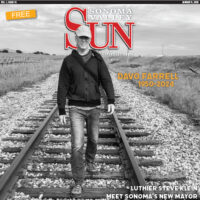NIMBY (Not In My Back Yard) is a pejorative term used to describe neighbors who don’t want change. In public land use policy just about any proposed project or changed use is going to generate public opinion against it. This is to be expected. All parties bring their particular interests to the table, including the opinions of property owners and renters.
Just as not every developer is greedy and self-serving, so too not everyone who objects to a proposed development is a NIMBY. No one gets out of bed in the morning thinking they have bad motivations. Neighbors and neighborhoods have a natural stake in what type of development happens around them. It’s not a matter of those who came first deserving greater consideration; everyone living in a community has a stake. All stakeholders deserve to feel heard and have their opinions taken into account. Having an opinion does not make one a NIMBY.
In Sonoma, some want to preserve things as they are, some want more commercial, hotel and hospitality development, and others want more affordable housing. Each of these interests is going to produce its own brand of NIMBYs, or opponents. When we see old photos of Sonoma’s past it’s obvious how much the town has changed over the last 100 years. Change and growth are constants, like it or not.
Various General Plans and development codes over time have sought to mirror the values of those community stakeholders who showed up to craft policy. These plans were made in good faith, with the expectation that such plans are an expression of community values. As a result, Sonoma today is a well-planned small town. From the standpoint of established property owners, this is good; for people wanting in, not so good.
The guidelines produced to steer Sonoma’s development are similar to all city planning processes; they cover many topics, from fostering demographic diversity, to economic vitality, to neighborhood cohesiveness. Despite hopes, that empty lot nearby will one day be turned to some other use; there is no guarantee that things will stay the same.
Indeed, neighborhoods all over America have seen waves of inhabitants come and go, different ethnic groups, classes, and cultures. This changing of the guard causes consternation among those preferring status-quo, and excitement among those preferring change, opportunity and dynamism. That describes life in many ways; there is a time for all things.
Many profess to support hotels, affordable housing or commercial development, but just not too near them. In truth, we are all potential NIMBYs, as most people like things to stay the way they are.
Do proposed changes result in a more just society, or do they only benefit a few people? Is there a pecking order of NIMBYs that has to do with being a renter, or a property owner or differing levels of wealth? When market factors cause huge increases in property values and rents, speculators take advantage of this and locals are forced to move to Vallejo; maybe NIMBYism has a valid moral basis. There is always tension between private property and public good, especially in a free market society.
One thing is certain, any project coming down the pike will have its opponents, especially if the project happens to be near their back yard.





Be First to Comment